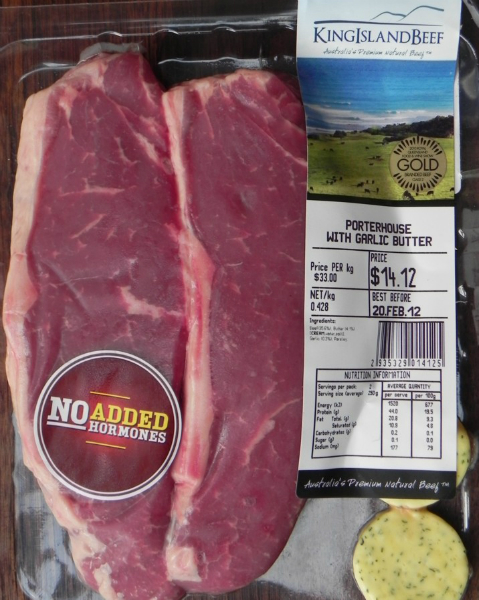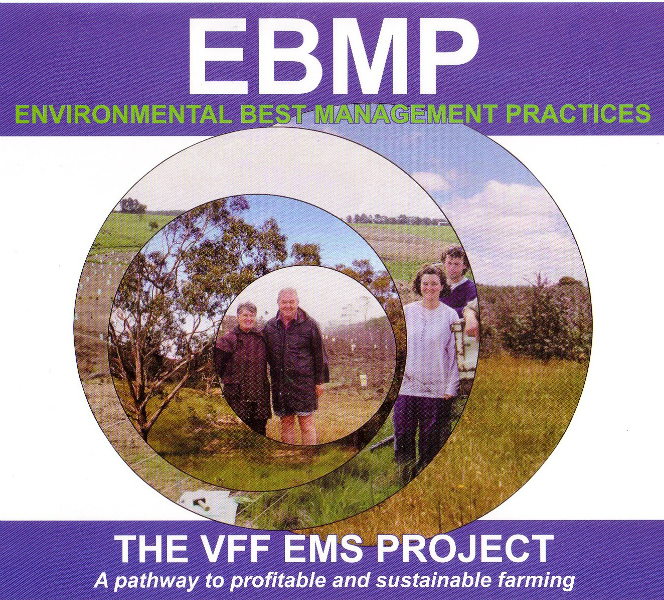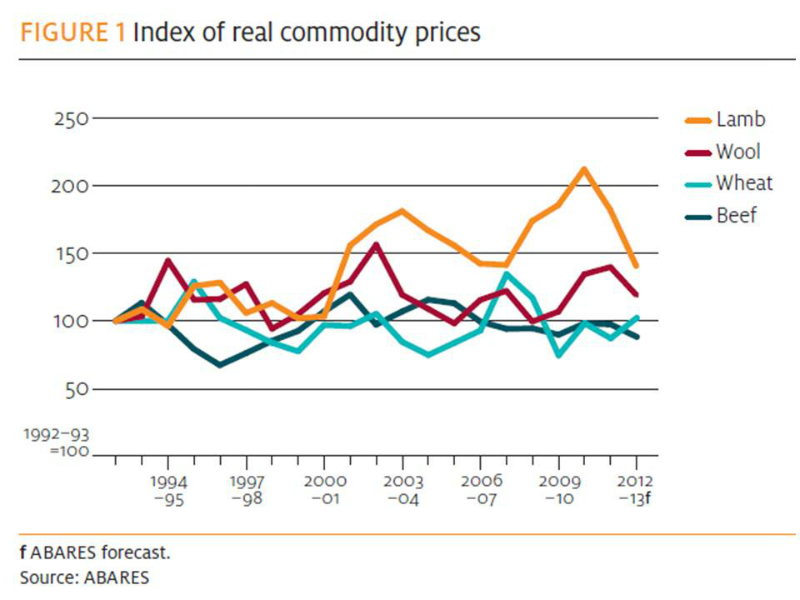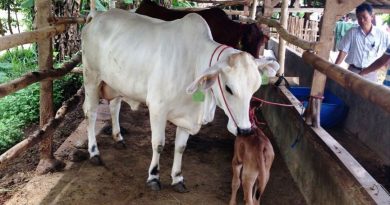Beef’s Global Roundtable vision has little to offer consumers
By Patrick Francis
The Global Roundtable for Sustainable Beef’s “Draft Principles & Criteria for Global Sustainable Beef” has little if any additional features to offer the world’s beef consumers. The beef industry already provides consumers with a range of environmental and credence value pathways to influence how beef cattle are farmed, processed and marketed and these will continue to be developed as consumer attitudes change. So it is difficult to understand why such a universal concept is being considered by the parties involved.
In the global beef market place consumers constantly use their purchasing power to accept or reject company brands with or without credence values associated with triple bottom line criteria. The company brands are also supported by individual country meat quality assurance regulations, labour laws, animal welfare laws, and on-farm natural resource management legislation.
These mean a meat wholesaler or supermarket chain in any country can purchase Australian beef from a major exporter secure in the knowledge meat safety QA is looked after, labour laws ensure workers are paid according to state laws, and that animal welfare and environment management on both farm and in processing meet minimum legal standards. Importers pay the price for Australian beef to “purchase” these desired standards and sometimes pay an additional premium for extra credentials such as organic certification, or finishing system eg pasture reared, or breed eg Certified Australian Angus, or location eg King Island Prime Beef. Despite the Roundtables claim that consumers world wide demand greater environmental credentials for beef, to date in Australia at least, there has been no premium price paid or market access preference given to finished cattle from farms which already supply the community with a suite of environmental services like clean water, carbon dioxide sequestration above and below the soil surface, increased above and below soil surface biodiversity and clean air. An increasing number of livestock and cropping farmers have been supplying these ecosystem services free of charge to the community for more than a decade.

Given all other exporting countries can offer the same, more, or less guarantees around ecosystem services and credence values to importing customers then it is difficult to see what extra assurances the Global Roundtable for Sustainable Beef is offering. This is made clear by statements in the draft principles which seem to be aimed at placating beef cattle farmers that some sort of international “big brother” is not about to impose rules and regulations on the way they farm. The draft principles states:
“GRSB does not intend to set standards or to create a certification program but to provide a common baseline understanding of sustainable beef that national roundtable and other initiative can use to meet their needs. GRSB …will not develop a seal, certification or comparable standard for sustainable beef.”
Given this statement it is difficult to see what relevance GRSB will be to Australian beef cattle producers and processors whose businesses are regulated by state and national laws. Each business also has access to additional programs they can voluntarily become involved in associated with ISO environmental certification, organic certification, and environment management system (EMS) programs. Beyond these an increasing number of farmers have adopted a suite of farming and conservation methodologies as standard stewardship practice. All these informal and formal methodologies support continuous improvement of ecosystem services on beef cattle farms which is the intent of Roundtable’s natural resource principle 1.
It is ironic that triple bottom line programs were developed and rolled out in some states for Australian livestock producers in the late 1990’s and early 2000s. Meat & Livestock Australia ran a number of pilot EMS programs with beef producer groups but none continued on due to lack of commercial support in terms of a premium price for livestock on participating farms, and the overload of paperwork involved. At the time EMS programs were portrayed as becoming essential for maintaining red meat market access, especially for high value beef products (see article written in 2000 below). But they now gather dust on participating farm office bookshelves.
There is only one ISO 14001 based farm environmental program operating, it is the Australian Land Management Group’s Certified Land Management. According to the Group’s web site there are about 150 landholders adopting Certified Land Management across four states managing 750,000 ha of cropping and grazing land. The main Certified Land Management outcomes on participating farms are improved environmental performance, support for biodiversity conservation and improved animal welfare. Despite these outcomes no meat processors or retailers have seen fit to embrace Certified Land Management as a supply requirement for any beef products.
The same ecosystem services and animal welfare outcomes are also being achieved under a range of different certified organic farming methods and under unrecognized holistic grazing systems. Only certified organic farming methods are actually recognised and rewarded in the market place with livestock price premiums which seem to average about 25% above non-organic market meat prices. Not even the famous and well supported “landcare farming brand” which supposedly involves around 50% of Australian farmers has been considered worthy of support in the beef value chain.
Given EMS, ISO 14001, and organic certification already exist and are available for voluntary adoption by beef producers world wide, it is difficult to understand where the Global Roundtable for Sustainable Beef is heading if it can’t throw its support behind them.

What’s more the Roundtable’s vision embraces more than environmental improvement it includes “… a world in which all aspects of the beef value chain are environmentally sound, socially responsible and economically viable.” Many Australian beef producers will be wondering how the Global Roundtable for Sustainable Beef will ever embrace “economic viability” given the real beef price today is equivalent to what it was in 1992, figure 1. By making the statement that “each participant in the value chain, from the producer to the ultimate consumer of beef, must enjoy viable economic participation in order to ensure sustainable growth” without any possibility of delivery, undermines the credibility of the Roundtable and relegates it into the realms of industry marketing hype. It should stick to providing objectives for areas it can actually achieve real outcomes in.

For instance, with animal welfare the Roundtable’s expectations for slaughter procedures fails to embrace the standard set in Australia which requires all animals be stunned prior to bleeding. Rather than raising the bar for livestock welfare at slaughter, the Roundtable has accepted the position of the World Organisation for Animal Health guidelines which allows bleeding leading to death without stunning. That’s a missed opportunity to make a difference to beef cattle welfare.
Overall the Global Roundtable for Sustainable Beef presents to the world a list of five principles which countries like Australia have already embraced for their beef cattle farming and processing industries. If it is to have any value as a mechanism for the triple bottom line improvement in all sectors of the beef industry it should be prepared to “name and praise or name and shame” the countries, states and company initiatives that meet or fail to fulfill the criteria for each principle.
The best way to attract individual farmers and companies to achieve the Roundtable’s vision is to provide incentives via the existing value chains. The evidence is clear that with market incentives in place all sorts positive outcomes can be achieved. The Roundtable’s great challenge therefore is to find ways to continuously reward value chain participants who share and meet its vision.
Note: The author’s Moffitts Farm was an Environmental Management System case study included in the book “Adoption of Environmental Management Systems in Agriculture – Part 1: Case Studies from Australian and New Zealand Farms” by Genevieve Carruthers published by Rural Industries Research and Development Corporation in October 2003.
Box story:
In 2000 Patrick Francis wrote about developments taking place with Environment Management Systems for livestock and crop farmers. The Global Roundtable for Sustainable Beef seems to be turning back the clock to restart the discussion.
Environment management initiatives gaining momentum
Initiatives are flourishing around Australia which could soon result in farmers introducing documented environment management on their properties. These will range from self-assessments based on documented Best Management Practices to third party audited property Environment Management Systems.
Since the 1999 Ballina Environment Management Systems workshop run by NSW Agriculture’s Genevieve Carruthers, other state and federal agencies as well as a handful of farmers have begun investigating the feasibility of environment programs for agriculture.
Documented environment management is new ground for Australian farmers and associated organisations. Given this, it is not surprising that considerable debate surrounds at what level farmers should become involved.
By year’s end two NSW farmers will have introduced all the necessary processes on their own properties so they can be accredited for having an Environment Management System in place. Another six in Queensland are not far behind.
According to Carruthers one of the major issues facing Environment Management Systems introduction is a failure to understand what they are and how they relate to the internationally recognised ISO 14000 standard. To overcome this Carruthers and research assistant Gavin Tinning have been working with two NSW farmers to develop blue prints for the processes involved in running an environment management system.
The blueprint has two components – a self-assessment guide and a generic process manual. It has been an important initiative to have these developed as they demonstrate how environment management systems differ from other initiatives such as environment related Best Management Practices (or Property Management Plans) and Codes of Practice in agriculture.
The major difference between an environment management system and the others is that it involves a continuously evolving process involving planning, doing, checking and acting for the individual farm. The others are prescriptive for an industry or a catchment.
Carruthers says the environment management system uses the ISO 14000 standard because it gives the farmer a process to work on that is recognised in 170 countries. But it doesn’t mean she says, that farms involved in the process must be ISO 14000 certified, or even audited.
In contrast, a farm or group of farms could promote their produce as being grown under a code of practice such as Farmcare or some other environment related banner like landcare. But without the backing of the ISO 14000 process it will have little credibility outside of regional or state circles. For Australia’s beef, wool, lamb, and grain producers this point is particularly relevant because the majority of these commodities are exported.
Carruthers is not dismissive of Best Management Practices and Codes of Practice, to the contrary she says they have a role to play as minimum standards when establishing an on-farm environment management system. In a project funded by Rural Industries Research and Development Corporation she is compiling a compendium of environmental Best Management Practices already developed across Australia.
Other projects underway that are associated with components of an agricultural environment management system include:
* Anna Ridley, Department of Natural Resources and Environment Rutherglen Vic, is developing an environmental farm planning approach with 17 farmers from the southern Riverina. Issues of concern include salinity, retention or remnant ecosystems, and farm business management with eco-labelling. A self-assessment process for farmers has been developed providing indicators for management performance.
* Geoff McFarlane and Kathryne Trewick NRE Vic, in consultation with farmers are developing a set of tools addressing various environmental best management practices for farms in south west Victoria. These will be presented as a series of ten worksheets (similar format to the Ontario Environmental Farm Plan worksheets) which farmers will be able to use to measure the sustainability of their farming practices against the current best management practice. By March 2001 they hope to have a complete set of 10 worksheets printed and available for anyone wanting to use them.
More than 200 farmers will be involved in developing and trialing the worksheets and a proposal has been submitted to expand this to over 1500 farmers next year with the help of some community co-ordinators) To date, more than 100 farmers in the Corangamite and Glenelg-Hopkins Catchments have participated in the project.
* Cameron Weeks, Mingenew-Irwin landcare group WA is investigating options for environmental management to be included in the state’s quality assurance program SQF 2000 (Box story)
* Meat and Livestock Australia is seeking expressions of interest from small groups of beef producers interested in piloting the application of a recognisable environment management system to their grazing properties. Each participating property will identify key aspects of sustainable land and environmental management for their enterprise and will work with others to apply the EMS process leading to ISO 14000 certification. The program aims to have certifications and documented processes in place within two years.
* Agriculture, Fisheries and Forestry – Australia, has sponsored discussions in Canberra about the role that governments may play in the development and implementation of voluntary industry based environment management system and production certification schemes. AFFA’s ‘Natural Resources in Rural Australia for a Sustainable Future’ discussion paper proposed EMS as one of several economic and market based instruments for achieving more sustainable farming systems. In responses to the paper there was widespread support for voluntary industry-developed environment management systems and production accreditation systems. The Paper’s steering committee says the thinking behind the proposal for wider adoption of EMS is to maintain access to existing markets or gain new markets where consumers are demanding sustainably produced products.
At one of the AFFA sponsored discussions Mike Logan, a Narrabri NSW, cotton farmer and owner of the world’s first ISO 14000 certified farm, raised the need for government to create rewards rather than punishments as an incentive for farmers to become involved. He said one benefit of environment management system adoption will be preferential market access, however, in achieving this it is highly unlikely that commodity prices will be improved outside their normal range based on supply and demand.
* The Supermarkets to Asia program has adopted Ecolabels and related value adding concepts as a high priority. It is developing marketing approaches for differentiating Australian food on the basis that it is produced in a clean environment. Supermarkets To Asia is encouraging farmers and the food industry to build regular market presence based on non-price factors that fit under the ‘clean and green’ umbrella with the claims backed by certification. Documentation is required to give the buyer confidence about the ‘clean and green’ claim and is additional to the minimum required to sell in the market.
Supermarkets to Asia is consulting with buyers and consumers to see what quality and environmental factors are important. It is also working with Australian suppliers to meet these expectations and to supply appropriate evidence of good quality and environmental practices in food production.
Carruthers says that while all these initiatives are encouraging for the introduction of an agricultural environment management system there is a danger of program duplication as happened with quality assurance. Instead of having a universal quality assurance program, commodities developed their own such as Cattlecare, Graincare, Cottoncare etc This resulted in separate manuals and audits for different commodities. While this is now being sorted out, for example Cattlecare and Flockcare audits can be undertaken at the same time, she says such a situation should be avoided with an agricultural environment management system by developing generic guidelines and self-assessment guides.
A special workshop during the On-Farm Food Safety and Quality Assurance conference in Launceston Tasmania 21 – 23 November, is being held to discuss how the level of duplication which has occurred in food safety QA programs can be avoided in agricultural environment management initiatives.


